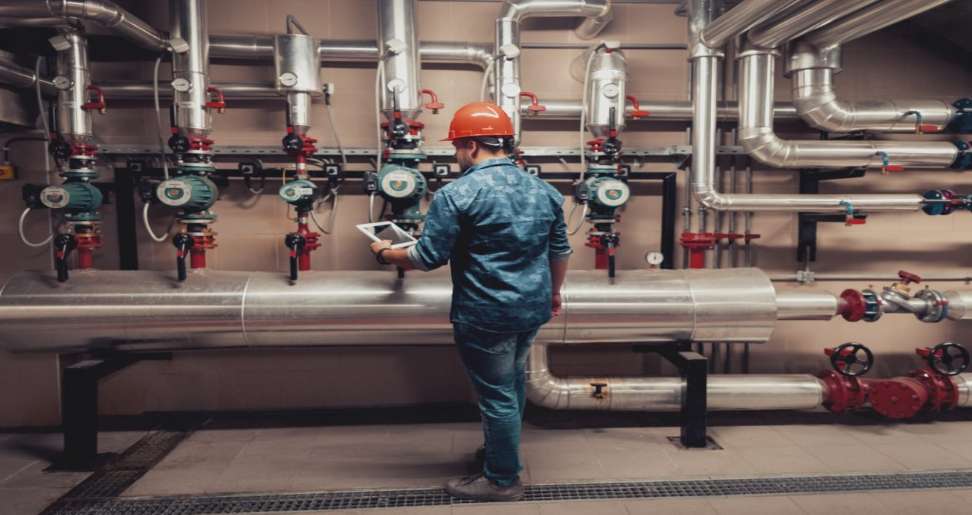Industrial facility plumbing installations are critical components of infrastructure, ensuring efficient water supply, sanitation, and environmental safety within manufacturing plants, refineries, warehouses, and other industrial settings. However, the installation and maintenance of these plumbing systems require adherence to rigorous safety protocols to mitigate risks and ensure workplace safety. This article explores the essential safety measures and protocols necessary for industrial facility plumbing installations.
Understanding Industrial Facility Plumbing
Industrial plumbing systems differ significantly from residential or commercial setups due to their scale, complexity, and the types of materials they handle. These systems often involve high-pressure water supply lines, corrosive chemicals, and wastewater disposal mechanisms. Given these factors, safety considerations are paramount to prevent accidents, environmental hazards, and operational disruptions.
Pre-Installation Safety Assessments
Before commencing any plumbing installation in an industrial facility, thorough safety assessments must be conducted. This includes:
- Site Evaluation: Assessing the layout of the facility to identify potential hazards such as electrical lines, confined spaces, and existing plumbing systems.
- Material Selection: Choosing plumbing materials that are compatible with the substances being transported (e.g., corrosion-resistant pipes for chemical handling) to prevent leaks and contamination.
- Risk Analysis: Conducting a comprehensive risk analysis to anticipate potential hazards during installation and operation.
Safety Protocols During Installation
During the installation phase, strict adherence to safety protocols is essential:
- Personal Protective Equipment (PPE): Workers must wear an appropriate PPE, that also including gloves, safety goggles, hard hats, and respiratory protection while handling chemicals or working in confined spaces.
- Lockout/Tagout Procedures: Implementing lockout/tagout procedures to de-energize and isolate equipment to prevent accidental activation during installation.
- Ventilation: Ensuring adequate ventilation in confined spaces or areas where hazardous fumes may accumulate, such as chemical storage rooms or wastewater treatment facilities.
- Fall Protection: Installing guardrails, harnesses, or safety nets to prevent falls from elevated platforms or scaffolding during pipe installation.
- Emergency Response Plan: Establishing an emergency response plan that includes procedures for chemical spills, leaks, or injuries, with clear communication channels and designated emergency exits.
Testing and Commissioning Safety Checks
After installation, rigorous testing and commissioning procedures are crucial to verify the integrity and functionality of the plumbing system:
- Pressure Testing: Conducting pressure tests to ensure pipes can withstand operational pressures without leaks or failures.
- Leak Detection: Using advanced leak detection methods, such as pressure decay testing or infrared thermography, to identify and repair leaks before system activation.
- Chemical Compatibility Testing: Verifying the compatibility of plumbing materials with the chemicals or substances they will transport to prevent corrosion or contamination.
Ongoing Maintenance and Safety Practices
Once the plumbing system is operational, ongoing maintenance and safety practices must be implemented:
- Regular Inspections: Conducting routine inspections to check for signs of corrosion, wear and tear, or potential leaks that could compromise system integrity.
- Employee Training: Providing comprehensive training to personnel on safe handling practices, emergency procedures, and the use of safety equipment.
- Hazardous Material Handling: Implementing protocols for the safe handling, storage, and disposal of hazardous materials used or transported through the plumbing system.
- Documentation and Compliance: Maintaining detailed records of maintenance activities, inspections, and compliance with industry standards and regulations.
Conclusion
In conclusion, safety in industrial facility plumbing installations is non-negotiable. By adhering to stringent safety protocols throughout the installation, testing, and maintenance phases, industrial facilities can minimize risks to personnel, prevent environmental damage, and ensure the reliable operation of their plumbing systems. Implementing these measures not only protects workers and the environment but also contributes to the overall efficiency and sustainability of industrial operations.
Ensuring safety in industrial facility plumbing installations requires a proactive approach, meticulous planning, and continuous adherence to safety standards. By prioritizing safety at every stage of the plumbing lifecycle, industrial facilities can maintain a secure working environment and uphold operational excellence.
Also Read:-
- How Many Jobs Are Available In Electric Utilities Central?
- How Many Jobs Are Available In Consumer Non-Durables
- How Many Jobs Are Available In Real Estate Investment Trusts?

